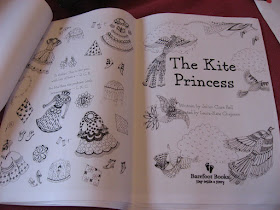Hmmm. How can I follow Julia Donaldson with sage advice on picture books? Obviously I can’t…I know! I’ll use my best diversionary tactic and tell a rude story.
Did you know that there’s an old biscuit tin that collectors will pay a great deal of money to get hold of? It was made in the 1970s by Huntley and Palmer and it shows a charming Edwardian village scene – except that its designer was so fed up with his fee he sabotaged it and hid several characters in the background doing…ahem…extremely rude things.
Inspired by this, my blog today is a blatant attempt to create a lucrative collector’s market for children’s picture books that include embarrassing mistakes. Hey, every little helps these days, and many authors will have lots of old complimentary book copies kicking around the attic. Most of these are likely to be foreign language translations, admittedly, but there might be one or two with a continuity error in them, fit for collectors of dodgy biscuit tins, wonky stamps and the like. These things happen, even in children’s books. My personal examples come from the early 1980s, before computer systems took over the publishing process, making it easier and much cheaper to catch and correct errors before the printing presses rolled.
When I got my first job as a tea-making junior editor, a publishing colleague turned out to be so fed up that he’d lost the will to function at his desk. It was down to him to create a Disney board book featuring cartoon ducks Hewey, Dewey and Lewey. Nobody checked his work, so when thousands of the books were printed there was no ending to the story, It finished on an ‘and’. The weirdest thing was that nobody ever wrote in to complain. I expect to see it on the Antiques Roadshow any time soon.
On a photographic board book the same employee failed to spot a difficult feature on a photo of a young horse – a very excited young horse, shall we say. We had thick files of complaint letters on that one. By that time the editor in question had left to become a vicar, where I hope he concentrated harder.
As a newbie I was put in charge of innumerable colouring and dot-to-dot books, featuring various different licensed characters of the time. Each book had to have a legally correct imprint detailing the copyright owners – large and potentially litigious companies such as Walt Disney or DC Thompson. Printed advances went to these companies to be checked and signed off, and if anything was wrong, costly pulping of many books might follow. Imagine my panic when I accidentally got the copyright details mixed up on a couple of books and it looked as if DC Thompson owned Mickey Mouse and Disney owned Bananaman!The horror!
What to do? Luckily the young man responsible for sending out the advances could be taken into my confidence and persuaded to ‘forget’ to send them, so nobody noticed.
How much persuading? Well, it’s probably time I gave this blog a little more class and so, as they say in the very best books…Reader, I married him!
As an author you can’t control the mistakes of editors or illustrators but you can make sure you don’t start by leaving a gaping continuity hole in your work, by reading through it and getting someone else to read through it before you send it off. Then - and I know this all sounds obvious - but it really is vital to very carefully check any proofs that come back to you, just in case you’ve mentioned somebody who wears a red bowtie and he’s now wearing a blue cravat but nobody has noticed.
PS: On a non-picture book note, a company I worked for published a recipe book by a newly-celebrated young chef who went on to become a big celebrity. But somehow or other his quantities weren’t printed accurately and the book recipes were a disaster. Cue more files full of letters and a costly reprint. I’d better not point to his identity in any manner. After all, now we are all in another season… but there are two clues in this paragraph. Once you have solved it, it will be time to go and check your biscuit tins.






















